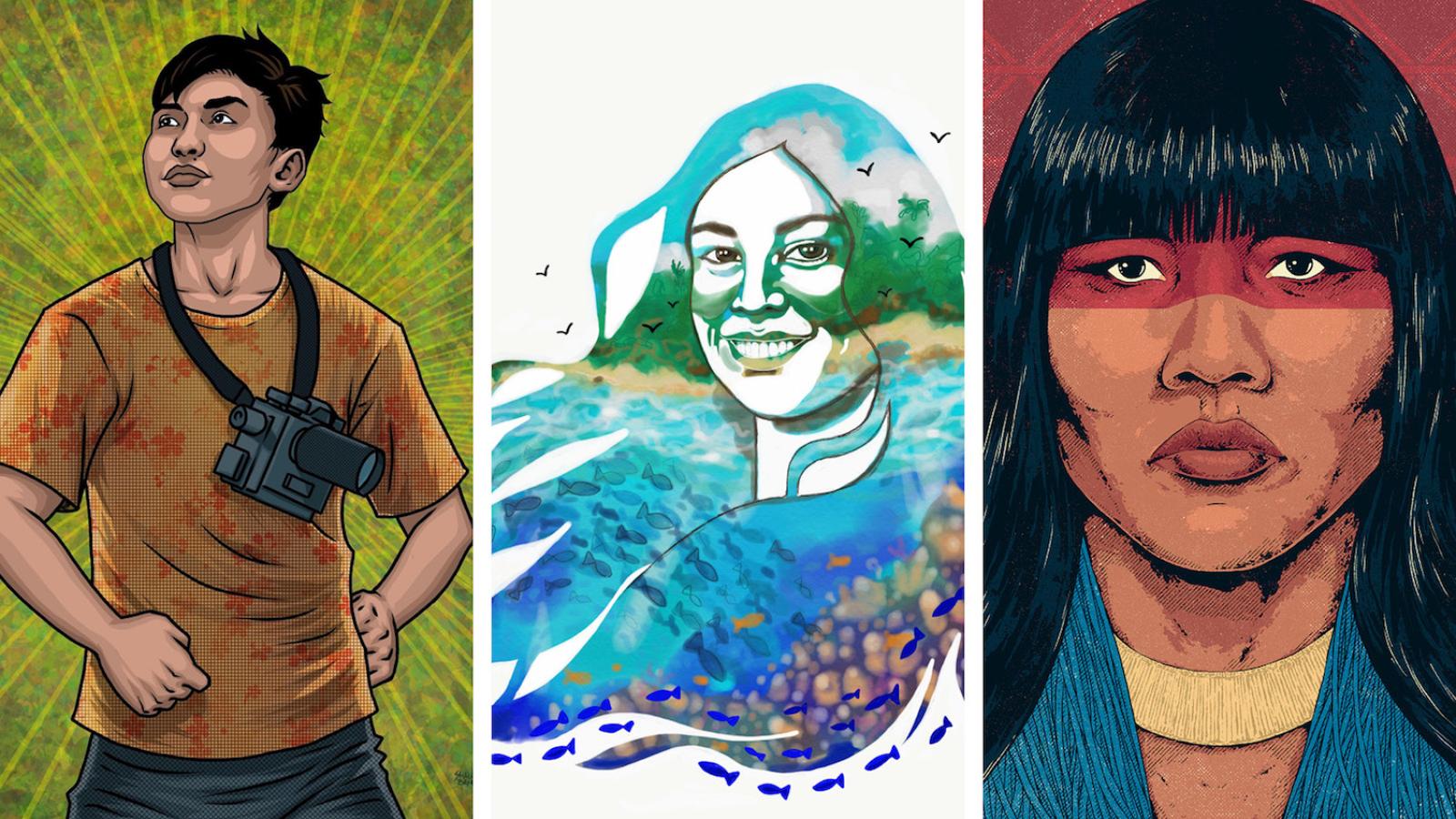GiGi Buddie ’23, a Pomona College student of Tongva and Mescalero heritage, traveled to Scotland for the United Nations Climate Change Conference known as COP26 after developing a multimedia art exhibit highlighting Indigenous leaders in the fight against climate change.
Buddie was part of the Glasgow delegation for the Human Impacts Institute, a nonprofit that uses art and culture to inspire environmental action. She was selected for her work on “Human Impact Stories: The Climate Crossroads,” a group of portraits and interviews with 10 Indigenous climate activists from the Global South that is being exhibited November 2-4 at Glasgow’s Centre for Contemporary Arts.
After starting at the Human Impacts Institute as an intern last January, Buddie became the organization’s environmental community coordinator. Collaborating with Tara DePorte, the nonprofit’s founder and executive director, Buddie sent out calls for nominations of Indigenous climate activists from the Global South and worked with a committee to select 10 women and youth to feature. Buddie then sought out Indigenous and Afro-descendant artists for commissioned portraits of each climate leader and conducted interviews with the activists that are included in the multimedia exhibit and available on the exhibit website and on Soundcloud.
Among the leaders featured are Kynan Tegar, a 16-year-old filmmaker from Indonesia who shares stories of the resilience of his community of Iban people; Vehia Wheeler of Tahiti, founder of Sustainable Oceania Solutions Mo’orea, a group that connects youth with their local environment and cultural traditions; and Watatakalu Yawalapiti, founder of the Xingu Women’s Movement in Brazil.
“Indigenous communities usually have very close ties to nature, living with the land rather than on the land, taking advantage of what is there and always giving back,” Buddie says. “The other sad part is that the climate crisis most often affects Indigenous communities and minority communities in greater ways than it does in more wealthy communities. They're the first impacted and hardest hit.”
Though Buddie lives on Tongva land at Pomona, she grew up in Northern California where she and her family are what are known as Urban Indians, a term for Indians who do not live on a reservation.
“I grew up on Coast Miwok land, just outside of San Francisco,” says Buddie, whose mother is descended from the Tongva people of the Los Angeles Basin as well as the Mescalero Apache of what is now New Mexico. Her father is white.
“My connection to community and my indigeneity has been through my family and also special things like going to the Stanford Powwow, which is the largest powwow on the West Coast and quite the event,” Buddie says.
As a child, she especially enjoyed the tradition of the talking stick, in which a stick is passed to signal a person’s turn to talk and others’ turns to listen. At Pomona, Buddie is part of the Indigenous Peer Mentoring Program, a student-run group for Indigenous students across The Claremont Colleges.
A theatre major and environmental analysis student, Buddie also has worked with The Arctic Cycle, a nonprofit that uses storytelling and live performances to foster dialogue and inspire action on climate change. One of that group’s initiatives is Climate Change Theatre Action, a worldwide series of readings and performances of short climate change plays that included an October production at Pomona that Buddie helped lead. Playwright Chantal Bilodeau, the founding artistic director of The Arctic Cycle and a mentor to Buddie, spoke on campus in connection with the production.
“Theatre in general is just such a powerful tool to get people to think critically about something,” Buddie says. “You quite literally have a stage. You have a platform where people are listening to you.
“I think what's so beautiful about theatre and other forms of art, visual and performing, is that anything that has to do with science, scientific jargon or academia can be so scary and not accessible. However, when you take the science of it and put the issue into a play, you're making it more accessible and you're creating an environment where people can absorb and interact with this material in a way that they're able to connect with and understand. It's also a way to tug at the heartstrings a little bit. When you see the IPCC [Intergovernmental Panel on Climate Change] Report, it's scary. But taking it and putting it into art creates an avenue where anybody can come to it and it can be accessible. That's really powerful.”
